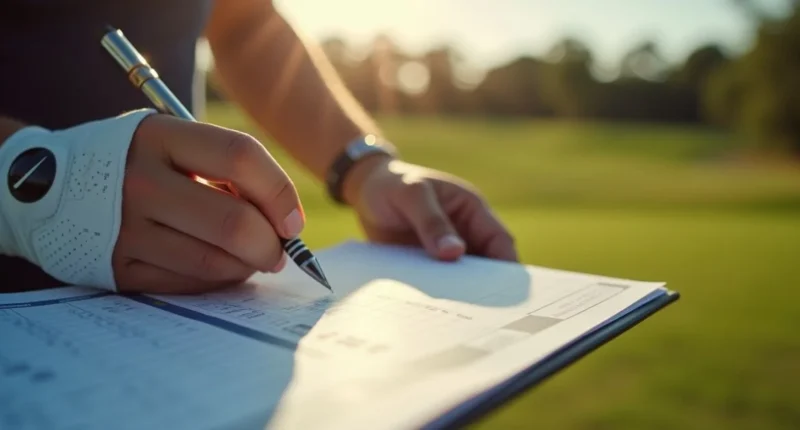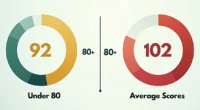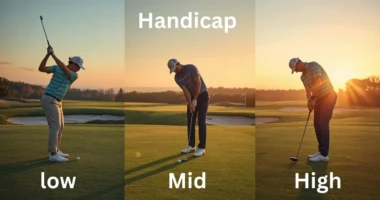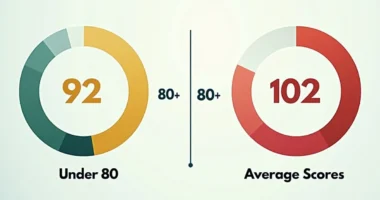Golf is a sport admired worldwide for its blend of skill, patience, and strategy. A common question among new players is: What qualifies as a good golf handicap? Understanding where your handicap standswhether it is strong, average, or in need of improvement, can provide a valuable perspective on your game.
What is a Golf Handicap?
Before we decide what’s “good,” we need to understand what a golf handicap means. A golf handicap is a number that shows how skilled a golfer is compared to a scratch golfer (a player with a handicap of 0).
Think of it as a way to even the playing field. For example, if you and your friend are at different skill levels, handicaps help both of you compete fairly. A handicap reflects how many strokes over par a golfer is expected to play on average.
- A lower handicap means the golfer is better.
- A higher handicap means the golfer still has room to improve.
So, when people ask, What’s a good golf handicap? They’re asking: What handicap level shows that someone is playing golf at a strong or respectable level?
What is Considered a Good Golf Handicap?
Now to the main question. A “good” handicap depends on your goals, who you play with, and how long you’ve been golfing. But there are general benchmarks:
- Scratch Handicap (0): This is excellent. It means you’re playing at the same level as par for the course. Scratch golfers are rare and often compete at a professional or semi-professional level.
- Single-Digit Handicap (1–9): This is very good. Golfers with a single-digit handicap are highly skilled, consistent, and often admired by others at the course.
- 10–15 Handicap: This is considered above average. Many recreational golfers fall within this range, indicating that you have a good understanding of the game.
- 16–20 Handicap: This is average for many casual golfers. It’s respectable, and players in this range enjoy the game while still working on consistency.
- 21–30 Handicap: This is beginner to developing skill level. It’s nothing to be ashamed of because every golfer starts here.
- 30+ Handicap: Usually beginner level, showing you’re still learning the basics of swing, putting, and course management.
So, in short:
- A handicap of 10 or lower is considered very good.
- A handicap of around 15–20 is average but still solid.
- Anything above 20 is beginner-friendly and a work in progress.
Average Golf Handicap for Men and Women

According to golf associations, the averages are slightly different for men and women.
- Men’s average handicap: Around 14–16
- Women’s average handicap: Around 27–29
This doesn’t mean women are less capable. It’s just a reflection of general playing experience and participation levels. Many female golfers also play at single-digit or scratch levels.
Why Does a Good Handicap Matter?
You might wonder, why should you care about your handicap at all? Here’s why it matters:
- Measuring Progress: It shows if you’re improving over time.
- Friendly Competition: It makes games with friends fairer.
- Tournaments: Many golf competitions require a handicap for entry.
- Personal Motivation: Setting goals like reaching a 15 or single-digit handicap can keep you motivated.
Tips to Improve Your Golf Handicap
If your goal is to reach a “good” handicap, here are some practical and proven strategies you can use:
1. Work on Your Short Game
A large percentage of strokes in golf are lost within 100 yards of the hole. Sharpening your putting, chipping, and bunker play can dramatically lower your scores. Spend time practicing different lies around the green, and develop a consistent putting routine to build confidence under pressure.
2. Focus on Accuracy Over Distance
While long drives look impressive, accuracy often matters more. Being in the fairway sets you up for easier approach shots and fewer mistakes. Instead of swinging for maximum power, work on controlling your ball flight and hitting more fairways. Consistency in placement often beats raw distance.
3. Practice Consistently
Like any skill, golf rewards repetition and discipline. Regular practice, even short 20–30 minute sessions a few times a week, helps build muscle memory and consistency. Mix up your practice routine with a balance of driving range sessions, short game drills, and on-course play.
4. Learn Course Management
Good golf isn’t just about great shots; it’s also about smart decisions. Know when to take risks and when to play it safe. For example, laying up short of a water hazard might save you more strokes than attempting a risky long shot. Managing your strategy hole by hole can significantly improve your handicap over time.
5. Take Lessons from a Pro
Even experienced golfers develop habits that hurt their game. A golf professional can analyze your swing, correct technical flaws, and suggest drills tailored to your needs. A handful of lessons can give you long-term improvements that practice alone might not achieve.
6. Track Your Stats
Keep a simple record of key stats such as fairways hit, greens in regulation, sand saves, and putts per round. Reviewing these numbers highlights exactly where you’re losing strokes and allows you to focus your practice more effectively. Over time, this targeted approach will translate into a lower handicap.
7. Play with Better Golfers
Surrounding yourself with more skilled players can raise your game. Observing their strategies, routines, and shot selections provides valuable lessons you won’t get from practice alone. Plus, the competitive push motivates you to play smarter and more consistently.
8. Stay Physically and Mentally Fit
Golf requires both stamina and concentration. Simple fitness routines focusing on flexibility, balance, and core strength can improve your swing and reduce the risk of injuries. Just as important is the mental side: stay calm, focused, and patient even when your round isn’t going as planned.
9. Invest in the Right Equipment
Having properly fitted clubs, especially your driver and putter, can make a noticeable difference. Custom fitting ensures your equipment matches your swing style, which helps with both accuracy and consistency. Even small adjustments in grip size or shaft length can improve performance.
Common Mistakes Golfers Make About Handicaps
Many golfers misunderstand how handicaps work. Here are some mistakes to avoid:
- Thinking a lower handicap means you’ll always win: Golf is unpredictable. Even pros have off days.
- Comparing too much with others: Focus on your own game and improvement.
- Forgetting handicaps adjust by course difficulty: A handicap isn’t the same everywhere. Harder courses may give you more strokes.
- Not recording scores honestly: A handicap only helps if it’s accurate. Always be truthful about your scores.
Conclusion
So, what counts as a good golf handicap? anything that shows improvement and helps you enjoy the game more. In general, a handicap of 10 or below is considered very good, while the average for most golfers is between 14–20.





